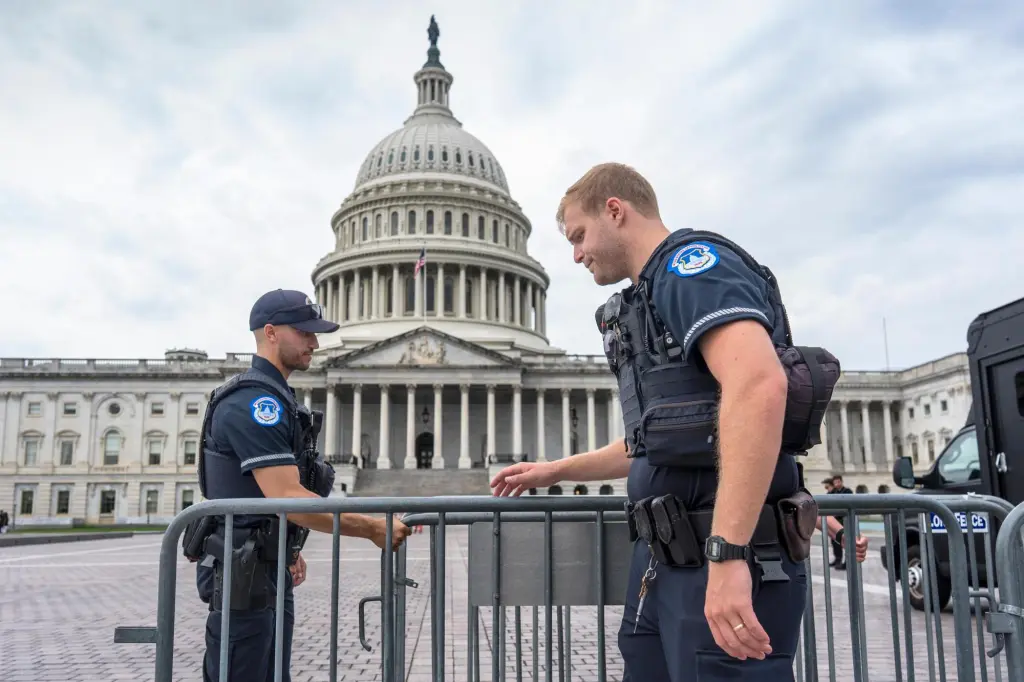
Under a federal government shutdown, impacts are expected for Hampton Roads, a region that heavily relies on federal funding and employment.
Government funding will lapse just after midnight Wednesday unless Congress approves a stopgap spending bill.
A long-term lapse in appropriations could cause major damage to the region’s economy. Federal entities employ residents by the tens of thousands in Hampton Roads. While many of the region’s federal workers with military jobs or other essential workers continue during a shutdown, oftentimes they do not get paid. Other nonessential workers who are employed directly by the federal government are typically furloughed, meaning they do not work and generally receive backpay when the government reopens.
The Congressional Budget Office reported Tuesday that about 750,000 employees across the country could be furloughed each day of the shutdown. The total cost of those workers’ compensation is about $400 million per day.
The CBO report states that employees of several departments could be paid during this shutdown because of special treatment in the reconciliation bill passed over the summer, but it is not guaranteed. Those departments include the Department of Defense, Department of Homeland Security and Federal Aviation Authority. Members of Congress will also continue to get paid.
Contractors will likely go without pay, and, unlike direct federal employees, they would be unlikely to receive back pay when a funding bill eventually passes.
About $1 billion per month could be removed from the Hampton Roads economy if there were a long-term shutdown, Bob McNab, chair of the economics department at Old Dominion University, estimated in March the last time there was a shutdown threat. The federal government employs about 60,000 workers in Hampton Roads, and they earn about $6 billion in wages each year. The military’s 85,000 active duty members in the area earn another $4-5 billion. This can have a snowball effect on private businesses in the region, since federal employees cut back spending at restaurants, groceries and retail stores during shutdowns, the Congressional Budget Office reports.
According to a new report from Commonwealth Institute for Fiscal Analysis, a public policy firm based in Richmond, federal civilian and military spending accounted for 8.8% of Virginia’s GDP last year, compared to 3.6% for the United States overall.
During this shutdown, the White House’s Office of Management and Budget has indicated that instead of furloughs, there could be firings of federal workers. An OMB memo said those programs that didn’t get funding through the One Big Beautiful Bill this summer would bear the brunt of a shutdown. It’s unclear, at this point, how this might affect workers in Hampton Roads.
What stays open?
Essential government functions, such as air traffic controllers and law enforcement would remain on the job. Social Security and military pension checks would be mailed on time.
U.S. defense and security operations at home and abroad would remain in place if they are deemed necessary to protect human life or prevent the destruction of property. The same standard would be followed in deciding what other federal services should continue. Veteran health care also continues during a shutdown. Veterans Affairs medical centers and outpatient clinics will be open, and VA benefits will continue to be processed and delivered. Burials will continue at VA national cemeteries.
Most Department of Homeland Security employees would continue to work. Only about 14,000 of the agency’s roughly 271,000 employees would be furloughed, according to plans published on the DHS website.
Some government operations wouldn’t be affected because they are exempt or self-funded. The U.S. Postal Service would continue operations, since the majority of its funding comes from sales, like stamps. That also goes for the National Weather Service. Federal taxes would continue to be collected.
How long does it last?
It’s unknown how long a shutdown may last. The last shutdown — which was from late 2018 to early 2019 — lasted about 35 days. That shutdown cost the United States about $3 billion, according to the Commonwealth Institute’s report. Republicans have crafted a short-term measure to fund the government through Nov. 21, but Democrats have insisted the measure address their concerns on health care.
Eliza Noe, eliza.noe@virginiamedia.com



